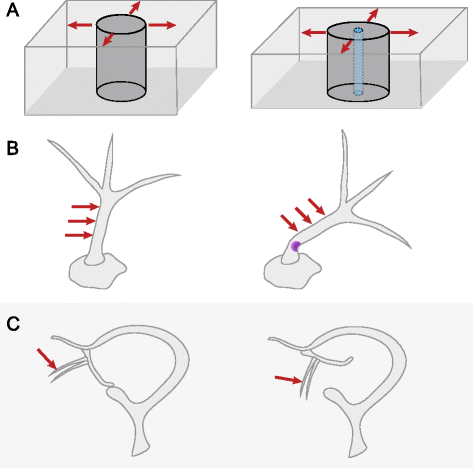Life behind the wall: sensing mechanical cues in plants
- PMID: 28697754
- PMCID: PMC5505048
- DOI: 10.1186/s12915-017-0403-5
Life behind the wall: sensing mechanical cues in plants
Abstract
There is increasing evidence that all cells sense mechanical forces in order to perform their functions. In animals, mechanotransduction has been studied during the establishment of cell polarity, fate, and division in single cells, and increasingly is studied in the context of a multicellular tissue. What about plant systems? Our goal in this review is to summarize what is known about the perception of mechanical cues in plants, and to provide a brief comparison with animals.
Conflict of interest statement
Competing interests
The authors declare that they have no competing interests.
Publisher’s Note
Springer Nature remains neutral with regard to jurisdictional claims in published maps and institutional affiliations.
Figures



References
Publication types
MeSH terms
Grants and funding
LinkOut - more resources
Full Text Sources
Other Literature Sources

